Artificial Light Spectrum
There has been much discussion about the different spectra produced from artificial lighting so I wanted to share some of my findings.
Nearly all the lights in my home are 6500k fluorescents, with a few exceptions being 4100k/cool white or halogen.
I photographed each of the light spectra below through a gemological diffraction grating spectroscope:
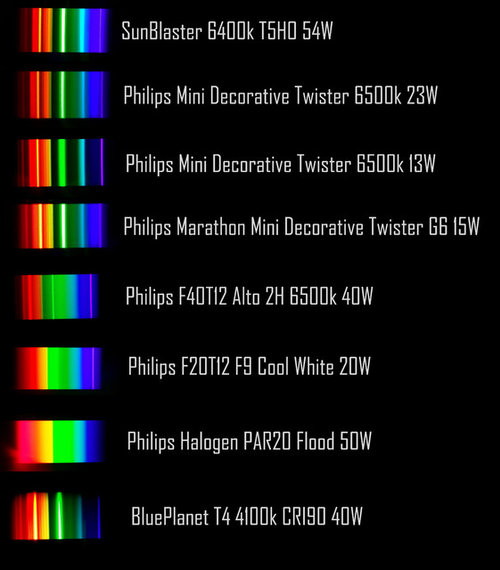
The top spectrum is the T5HO lamp that I am currently using for growing my succulents. It's interesting to note that the green peak is very narrow (but quite bright) with most of the intensity focused at the red/blue wavelengths.
Based on the small sample of 6500k fluorescent twister bulbs in my home, it appears that there is a big variance between the wavelengths produced. This makes me think that you should be careful what you pick if getting these types of bulbs.
It's surprising to see how smooth the T12 lamp spectrum was. However, it was quite dim and much harder to get a good reading from. The green spectrum is fairly bright, as compared to the SunBlaster T5HO. If you believe that only red/blue light is required (I am skeptical) then a typical T12 is far from optimal.
Unfortunately, I only have one type of LED bulb which was 4100k. I didn't include it here because I didn't think it was that useful. (If you are curious, the spectrum was quite even throughout the range, not peaky like most fluorescents above.)
Hopefully this brings at least a tiny bit of insight to the discussion of light spectrum.
I know many of you are using different types of lamps by various manufacturers so it is not a comprehensive comparison by any means, but I wanted to help a better idea of the spectra for commonly used lights.
If you have any information regarding spectrum of LED and other lights that you want to share here as well, please feel free!
Ideally, I'd like to add Metal Halide / High Pressure Sodium / LED grow lights to this thread. All depends if I can find a local store that has a demo setup that I can get a few readings from.
Comments (49)
- 8 years ago
kevin? What does it mean if the spectrum measured by your spectroscope is smooth? And doesn't intensity depend on the power draw?
Too bad I can't get that contraption on Amazon or I'd be able to bridge the LED gap--we replaced all the lights in this house with nothing but LEDs when we got it.
Pagan
0 ewwmayo
Original Author8 years agoPagan - The spectrum of my 4100k LED lights looks extremely similar to the halogen flood light spectrum (no gaps). I believe this is because of the white frosted coating they put on the glass casing of the bulb.
I also tested the LED on my smartphone (very bright and high quality for lighting photos) and the spectrum looked similar as well, but just a bit less intensity in the reds and more in the blues. Which makes sense because it's a more daylight balanced light (rather than warmer tungsten-esque temperature).
Similarly, I tested my Petzl headlamp and it had a very good spectrum covering the wavelengths from red to blue with no gaps.
Does that make sense? I can explain more if necessary. =)
0Related Discussions
Lights - 'grow' lights, 'full spectrum' lights, 'daylight' lights
Q
Comments (9)Hi Liz, Since I have been growing for over 25 years I have found that the 4' fixture is best for my plants and also the most economical. When I was working and could afford them I used Varilux bulbs which I found gave the plants a great growth rate, however, they are expensive and cost retail over 12 dollars each. Since retiring I switched to 40 watt cool whites which I purchase by the box at Home Depot or Lowes. They work well and give me no problems. I have on occassion in the past used Gro-Lux and Gro-Lux WS. Both bulbs give good growth to the plants and make the plants look really beautiful and healthy under the light. But when you remove the plant from the light into natural light there is great disappointment. They loose their color and look rather ordinary. The Gro-Lux WS bulbs were always cheaper than the Gro-Lux. Many people prefer to use one cool whit and one warm white to grow. Since I cannot find warm whites I now use cool whites exclusively. Hope this helps. Fred in NJ...See MoreBees and greenhouse
Q
Comments (14)The use of honeybees for a GH is a very bad choice. Honeybees by nature fly a straight course from food source back to their hives so they would only be confused and die trying to get out. honey bees also make honey and store it for use later so if the supply gets too much or the bees get to many the hive will swarm and leave. The best choice for a GH is bumble bees that are breed for pollinting. They are very small and the hive is about 12' sq. that's all they need since they don't make honey. They are very gentle and will float around from bloom to bloom doing their job. You will love these bees!...See MoreFluorescent vs LED
Q
Comments (38)"I ordered some of those $4.40 10W LED floodlights. Within 2 weeks, I should be able to post here whether the LED chips inside can easily be changed." fred o connor, I now have two models, HK-LD300 and Plighting CLEF120V10DL and neither will allow you to change the LED chip without also changing the drivers because the installed drivers are 25-38V and the grow light LED chips are 9-11V. But, for what it's worth, HK-LD300 has much better quality than CLEF120V10DL which, unlike HK-LD300, has unmarked drivers with plastic cases and actually uses 4.5 watts of power. Also, HK-LD300 has a larger aluminum body with larger cooling fins. It would be easier and cheaper for you to mount 10W LEDs on a 48" x 2.5" x 1/8" aluminum bar, with 60mm cooling fans, like I did with the blue LEDs shown here: http://www.general-cathexis.com/images/LED1.jpg http://www.general-cathexis.com/images/LED2.jpg http://www.general-cathexis.com/images/LED3.jpg If interested, I will give you more details....See MoreArtificial lighting - dealing with direct sun vs. shade requirements
Q
Comments (18)Obi - I'm using three Vornado fans, which provide a lot of airflow. Two designed for small room air circulation and blowing directly on my plants. One is permanently on, the other only for a day after watering. The third fan is quite large and circulates air up my stairwell and into the loft, reducing temperature greatly. It's set on a timer to start an hour after my lights go on and maybe two hours after they go off. The power setting is the lowest for each to save on electricity. I recommend buying a power meter ($40) or borrowing one free from your local library to decide on the optimal power vs airflow setting for your fans. Like Daniel, I have had no issues with more blueish (daylight balanced) lights. I do not believe red lights are required for succulents to flower. At least, I confirm this does not apply to my: Haworthia, Aloes, Echeveria, Huernia, Lithops, Faucaria, Crassula, Schlumbergera, Euphorbia, Aloinopsis, Gibbaeum, and Lapidaria. My experiment/research is ongoing and hope to add more to this list. =)...See More- 8 years ago
What is the goal of this? Are you trying to determine the best artificial light source for plants? Those are some really interesting findings. I've been told that yellow/green light is basically useless for plants, however the article below seems to suggest it may have some use ... http://msue.anr.msu.edu/news/green_light_is_it_important_for_plant_growth
Would sunlight break your fancy gadget? If not then I'd be very interested to see what the sun's spectrum looks like compared to artificial lights. I'd expect a bit more of a red shift.
0 ewwmayo
Original Author8 years agoPagan - I got back home and took some photos of LED sources in my home. One is a LED light strip by Ikea, which you can tell the spectrum is only Red, Green, and Blue (even though it looks white).
Below that is my other LED light by Philips. Here you can see the spectrum is very good, although it has a lot of red (2700k, a very warm colour temperature).

If the goal is to replicate the sun's natural light, the bottom LED light would do a much better than the top. It's smoother and emits a much wider range of wavelengths/colours of light.
Nicholas - It's hotly debated whether fluorescents lamps have a spectrum that is good enough for growing plants. Manufacturers virtually never give out the spectrum of their lamps so you have no idea what you'll get other than "simulate natural sunlight" and "produce a light of much higher quality than a conventional tube".
Are the lamps actually worth the money or just marketing hoopla? Do they really replicate sunlight? I wanted to see for myself because most of the information online is repetition of the same myths/generalized statements with no actual proof.
Another common question is if spiral CFLs are actually any good for growing. This is for the more budget-conscious grower who isn't willing to splurge on fancy specially designed CFLs.
The answer isn't so straightforward because there is a lot of variation even within a single manufacturer's available models. For sure, some care is required when going this route because light quality for 6500k bulbs is not guaranteed.
I want to take a shot of the sun and add it here too!
Just... we got hit with daylight savings and it was already sunset by the time I got home from work. Will try to add that in once I get a chance. =)
0- 8 years agolast modified: 8 years ago
First of all, Kevin, I am so glad you are doing what you are doing. Thanks for letting us ride along with your learning curve!
Anyway, the sun spews out the entire electromagnetic spectrum so that's a lot of fun. What grow lights try to mimic is not really sunlight per se, but the wavelengths most useful to plant growth. Plants only use some of the radiation from the sun and protect themselves from most of it.
As non-commercial hobby growers, the best case scenario is a relatively low-watt light source that emits the most useful wavelengths without wasting power on heat. This is what LED panels are supposed to do since the diodes themselves emit very specific wavelengths. Getting a diode lead to emit bright blue light turned out to be so difficult that the guy who succeeded won a Nobel for it just last year. Before this guy (can't remember his name, only that he is in Nagoya), LED could not be used for household and commercial lighting because they could not make white light for daylight bulbs.
For growing purposes, we do not want white. We want blue and red that we are certain plants need. Green may be useful but if plants can do without it for the duration of winter, for example, I'd rather get a setup that only spends energy generating the most useful wavelengths. I wish you had several panels of LED growth lights, Kevin, so we can compare those!
If we took special-purpose grow lights out of the equation and just compare common household lights which tend to be cheaper, we'd still want bulbs that generate the least amount of heat as waste and emits as close to blue and red as possible. This is where Kelvin comes in. Bulbs with low color temperature (measured in Kelvin) have more red and less blue. Bulbs with high color temperature (6500 Kelvin and over) have more blue and less red. Annoying, I know. But it is what it is and as a rule, I get the "coldest" or highest Kelvin bulb I can find in favour of vegetative growth over inflorescence (which needs more red).
If the LED and halogen bulbs you compared are similar in emitted wavelengths, then the next question is which one of them is better at doing it for the least amount of energy. Put another way, how many watts does it take for either of them to generate at least 100k lux (direct sunlight is something like 130K) at N distance from the light fixture (where N is the farthest I can put a plant from the light source without having to disassemble the bloody shelf that kept hitting my shin when I assembled it lol). After that is which one of them lasts longer? Then after that is which one of them have a smaller disposal footprint (i.e. crap that will end up in unregulated landfills in the third world).
Hey, Amazon sells a Pocket Diffraction Grating Gemological Spectroscope for $34. That looks like a fun toy. Is it worth it, you think?
Pagan
0 ewwmayo
Original Author8 years agoRooftopbklyn - Thanks for bringing up PAR and PPFD. I do have three PAR DLI meters that I am using regularly. They have been logging my light intensities for over the past 6 months and have been incredibly useful.
The T5HO's I am using provide a good amount of PAR, over 35 DLI PAR in my main setup and around 10 DLI PAR in my secondary.
I do also have a Lux/FC meter, which is also fairly useful as long as the spectrum is close to the daylight spectrum. It's not exact, but gives a general idea of light levels much more quickly (in my case).
Love all the detail you've posted and you definitely should get a PAR meter for Christmas. =)
0- 8 years ago
Eww, I was looking into the AeroGardens (LED type) and was asking myself a lot of these same questions. Yet the manufacturer doesn't disclose much of the information and no one else seems to have it posted.
The IKEA LED gives some promise for growing because even though that specific one does not seem very intense, the spectrum seems great for growing (according to my understanding of what I've read).
I'm very anxious to see the visual break down of sunlight! This thread feeds my nerd and makes me happy. Anyone that knows me, knows that's nothing but compliment.
Thank you so much for the information and the idea of bold print for the main points is genus :)
0ewwmayo thanked Nicholas C. ewwmayo
Original Author8 years agoNicholas - Alright, I've taken some additional photographs/light measurements today.
It was very foggy this morning (everything white) and this afternoon it's a clear blue sky. The last one is from my desk lamp at work, since I'm (barely) growing an Aloe and Sansevieria there.
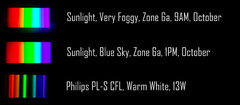
I will edit my original post to include all the readings together for easier comparison.
Rooftopbrklyn - I agree that white full spectrum LEDs have come a long way. They're ubiquitous in smartphones these days (with good spectrum), which has greatly improved manufacturing technology/capabilities.On the same lines as your thoughts, I think white full spectrum LEDs will soon be good enough that growers no longer will have to choose between red/blue/purple/white light.
As you say, PAR/PPFD/DLI is the most important criteria. Perhaps spectrum is the second-most important aspect to lighting plants.
ewwmayo
Original Author8 years agoOr maybe not... looks like you can't edit a top post?
Updated full chart below:
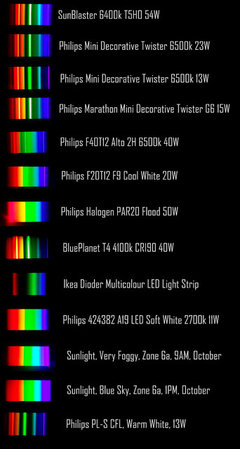
- 8 years ago
ewwmayo, that's really interesting. I was not familiar with DLI, but checked it out a little and found some elucidating info here: https://en.wikipedia.org/wiki/Daily_light_integral . From that page I picked this out as relevant vs your 35 DLI value for T5HO: " In the summer, the DLI for a sunny day is about 26 moles/day and 12 moles/day for a cloudy day."
It must be pretty bright in that grow room of yours, and your plants must be really really happy (assuming they like full sun). Can you talk a bit more about how much/what kind of T5HO you use to get 35 DLI, and how far from the fixture you are measuring (like, distance from bulbs)?
Also, maybe I am misunderstanding a bit, but seems like DLI values for each of your potential light sources would be even more meaningful than spectrum breakdowns (which are still really interesting) if the goal is to select best light for plant growing purposes.
Daniel
ewwmayo
Original Author8 years agolast modified: 8 years agoDaniel - Yes, my grow area is pretty bright! I do agree with Wikipedia's definition, here are my numbers for Zone 6a:
- Summer/Early June on my rooftop: 26.0 DLI
- Fall/End of August on my rooftop: 15.1 DLI
Now that it's winter, I keep adjusting my timer durations for photoperiodism (sunrise to sunset):
- 'Summer' T5HO primary setup in my loft: 37.5 DLI
- 'Fall' T5HO primary setup in my loft: 24.1 DLI
- 'Summer' T5HO secondary setup in my loft: 14.4 DLI
- 'Fall' T5HO secondary setup in my loft: 11.6 DLI
My primary and secondary setups are measured 2 or 3" away, at the same distance of the leaves of most my plants. One is 6x T5HO and the other 2x T5HO (same bulbs as in my first post). Both have different bulb spacing and therefore different light intensity.
You are correct that DLI values for potential light sources would be more meaningful for selecting grow lights!
Unfortunately, it takes a bit of time to set that up and record the readings that way. The simple generalization is that a light with poor PAR just ends up giving a lower DLI reading.
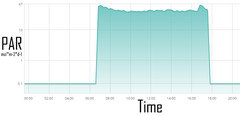
Nicholas - Today I was studying one of the best research articles I've read to date, published by Oxford University for the Japanese Society of Plant Physiologists:
It elaborates in great detail the purpose of green light in photosynthesis, as well as red and blue light. If I could briefly summarize the article:
- Red light is more effective at low PPFD (light intensities), but at high PPFD upper chloroplasts dissipate most of the energy as heat instead.
- Blue light is primarily absorbed only on the upper plant leaves. Absorption of blue light on lower leaves is under 5% of that of the upper leaves.
- Green light is extremely effective for photosynthesis due to the détour effect. Plants take advantage of an increased optical path length through spongy tissues with varying cell surface orientations.
So plants are using green light for two key functions:
- Allowing light to reach the lower leaves (which contain chloroplasts with properties like leaves of a plant grown in shade).
- Allowing light to pass through windows in the leaves (in the case of succulents) and reach the largest amount of chloroplasts possible within the entire leaf structure.
In this sense, the amount of "light penetration" is driven by the amount of green light produced by a grow light. And green light is actually used quite extensively by plants (50-90% utilization).
Another interesting article is this one, Economic efficiency of different light wavelengths and intensities using LEDs for the cultivation of green microalga Botryococcus braunii (NIES-836) for biofuel production.
In their 2014 study, the Green-Blue LED combination had the highest economic efficiency, followed by Blue-Red-Green LED (Figure 7). I mean... if you think of green microalgae being anything representative of succulents/plants. =P
Sorry about the ultra long post, but I thought it would be important to post my information sources and the accompanying detail/summaries!
- 8 years ago
I bookmarked this great thread. Very usable info. A little off track, but related, I have read that fluorescent grow lights lose their effectiveness over time, to the tune of 50% effectiveness in one year. Can anyone confirm that? Or is it somebody's way to sell more bulbs?
ez
- 8 years agolast modified: 8 years ago
I am having odd issues with my TaoTronics LED grow light (standard screw-in bulb) that I am not having with my LED panel. I could use the diagnostics but this paper might have just explained it. Thanks, yo.
Pagan
- 8 years ago
Now that is what I call information, it's amazing how full and bright sunlight appears. Not that I expected anything different, but for some reason expected there to be a dip in intensity somewhere in the spectrum.
I really want to read those research articles you posted Eww but it'll have to wait for later. I wonder if the best bulbs to choose are the full spectrum, possibly without much UV or IR. Have you found anything on the effects of light outside of the visible spectrum?
Also, something I've never seen to date is research involving non-green plants, for example Pleiospilos nelii 'Royal Flush'. Though that's pretty slow growing and would make for a long experiment.
- 8 years ago
Great information here, everyone! Bookmarking this for my eventual foray into supplemental lighting...
Nicholas,
Just wanted to add that the 'non-green' plants you mention have just as much chlorophyll in them as 'green' ones, the green colour is just masked by other pigments. Much like our maples turning red in the fall, the red colour was always there, it was just masked by the chlorophyll, which the trees resorb in fall..
Though it as not as straightforward with variegates. Obviously the white parts do not have chlorophyll....
0ewwmayo thanked breton2 ewwmayo
Original Author8 years agolast modified: 8 years agoFor those considering or who already have LED lights, you may find this article interesting: LED Lights for Microgreen Production
This provides comparison of LED light spectrum ratios for growing small (but much bigger than algae =P) plants for restaurants.
My understanding is that the article says DLI is the most important for growing. Different LED colours are more helpful in producing anthocynanins (flavonoids).
Oksana has discussed this (flavonoids) in the past and lately I've seen the trend of commercial growers turning to artificial lighting to "finish off" production of their plants. That is, they grow under whatever normal conditions are good for growing then before shipping out for sale they blast their plants with higher light or different spectrum to give them better colouration.
Lots of us seem to enjoy our colourful Jades and Echeveria, so it's a very useful strategy!
Ez - I highly doubt 50% effectiveness is lost. Depending on manufacturer, T5 may only lose 5-6% of lumen output by 40% of rated life. In a clean environment, Light Loss Factor is just 0.71 for fluorescent lights, due to dirt accumulating on the lamp/reflector/luminaire (Source: Cooper Crouse Hinds).

So if you have a new fixture, to be conservative you could say after a long time you will just get 70% of the original light output. And after 15,000 hours you may just 95% of your original lamp light output. At 35,000 hours it's lower than that, but clearly nothing like 50% loss. Which is a BIG difference from a Metal Halide lamp (shown as 400W High Bay in the graph above).
Personally, I am monitoring my lamp output with my own logging devices. However, I have built more than enough output to compensate for any losses due to aging over time.
The first 'solution' or 'preventative maintenance' is to carefully wipe down and clean all your lights periodically (probably once or twice per year) to get the most of your setup. Of course, make sure your cleaner does not leave residue or scratch or else you may lose a couple percent of output.
Pagan - No problem! Please post any findings you have with your LEDs too!
Nicholas - What I know is that UV light is damaging for plants (and most living organisms), so going that way of the spectrum is not helpful. I expect that going infra-red will just heat up the top leaves more.
I read a few articles but unfortunately don't have the sources/proof handy. There is some research saying that light outside of PAR has some effects (which I quite believe), but how much those effects impact our growing I'm not so sure.
Breton - Agreed about non-green plants. We are only seeing the chloroplasts on the surface of plants, but the light actually enters into the leaves as well (providing additional photosynthesis there).
For variegates, I haven't read much at all yet. As you imply, I think more light would be better so you don't limit the plant's limited photosynthesis capabilities.
- 8 years ago
Wow what an excellent thread! Ewwmayo, you are gentleman and a scholar and thanks for sharing so much knowledge here.
Bringing things back to cacti and succulents, i'm very interested to learn more about production of anthocynanins / flavonoids - or, how to best manipulate jade colors via indoor lighting (I understand there is also a temperature factor involved, but, thats a separate topic maybe). The micro greens article uses some notation that I don't really understand: " It was observed that under a DLI of 18 mol·m–2·d–1, microgreens produced with a light ratio of R87:B13 or R84:FR7:B9 produced significantly higher levels compared to those produced with a ratio of R74:G18:B8.". It would seem easy to assume that it's a ratio of red to green to blue light - maybe percentage wise (ie: out of 100) - but that isn't so specific when it comes to spectrum, And then what does FR mean? Anyway, if someone can shed light on what that notation means I would appreciate it.
What I gather out of it is that "more red" can mean more anthocynanins, which could mean more colorful jade?
The final parts arrived today so I'll be building my first LED experiment, based on Cree CXA3070 COB chips, I have one that is 6500K AD bin, and one that is 3000K AB bin - individually, either one driven at around 54 watts should produce a similar level of lumens to a 2 foot 4 tube T5HO fixture. one big difference is that I'll be using active cooling for the LEDs, (fans on heatsinks), though they will not run very high rpm and are very quiet.
Now after reading this thread I'm wanting to measure these more than hang them over my plants! haha its fun to geek out sometimes, but need to keep the end goal in mind: happy plants.
0 ewwmayo
Original Author8 years agoRooftopbklyn - FR would refer to Far Red (710 to 850nm). Normal red would be 620-740nm. I'm not sure if it exactly works for Jades, but it's quite possible?
Please take photos of your new setup as you build it! Those are some pretty nice LEDs.
0- 8 years agolast modified: 8 years ago
thank you! that really helps. Do the numbers after the letters represent percentages (out of 100) or something else?
I built the first unit tonight, though I made a stupid mistake so can't really use it yet. I fried the fan on the heatsink by connecting it with reversed polarity. The heatsink/fan combo I am using is cheap ($12-15) but I don't have another one right now :(, though I'll have a few more tomorrow. Even though I knew of this pitfall and tested for it, I still did it - I even used my meter to verify before connecting, decided it was reversed (phew!) but still fried the fan - because I had the black and red leads plugged in to the wrong places on my meter. !@$%# anyway easy come easy go, getting there is half the fun.
The heatsink itself is quite beefy for the 54 watts I'm putting through the LED, and it's somewhat under-driven at that power level (1.4 amps) so I could probably get away with running it a few hours but I don't want to risk it. I did light it up and WOW even standing directly behind it, it's really really bright. I believe it's putting out as many lumens as my 2 foot 4 tube T5HO (quality fixture, with good per bulb reflectors) but over a tighter area. I think it has about a 120 degree spread. And now I'm shopping for various meters, sigh. I blame you ewwmayo.
It came out messier than I wanted, but I have a lot of ideas on how to better on the next one. For now I am building individual units, each with it's own driver and power cord, though I may consolidate the cords and drivers for a few units together as I scale up.
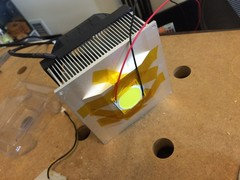
(the led is off, I would never ever be on the business end when its lit, would definitely cause permanent damange to eyes). That's kapton tape, because I didn't want to drill and tap the heatsink, though I may in the future. The LED is fixed to heatsink with thermal compound/grease I always use the wrong term there's a few kinds. The LED is soldered, the tape is only on the wires as small stress relief, not to maintain contact.
With this new insight into a potential lead on coloring up jades, I grabbed the spectral distribution from Crees datasheet, but unfortunately it doesn't have all of the options cree currently offers on it, maybe they need to or already have updated their datasheet, I couldn't find a newer one however.
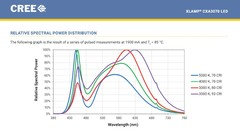
The 93CRI 3000K looks very sexy indeed, but I have not found it available anywhere. Could be we'll see this in available-to-mortals (ie single unit, rather than having to buy 100 or even 1000) quantities in the CXB3070 which are starting to be released now.
I have the 80CRI 3000K currently, and now have a 90CRI 3000K on order (though can't find spectrum for this anywhere). The 6500k I have (which is what is mounted on the heatsink pictured above) is listed as 80CRI but also no spectrum available. It likely has really nice low end blues so could help with etioliation.
Probably, if I spent a little time, I could find spectrum charts for all of them posted on cannabis forums as these LEDs are popular in that community and in fact it's where I first learned of them. But instead I'm going to spend my time searching for 93CRI and trying really hard to not go blind or electrocute myself.
Also, as much as I loathe funny/disco colored plant lights, I'm also now shopping for some individual red, far red and blue emitters, there's lots of good options that aren't very expensive. For science (really because I want to make my jades pretty). Maybe I'll experiment with a comparatively lower power "finishing" fixture to just add color once things are grown out, as you mentioned. Ideally this light would not be used for long stretches of time.
I'll probably start a separate thread once I build something I can actually use. I question a little whether all of this should happen over on the "growing under lights" forum but I like the regular posters in C&S quite a bit, and since my initial goal is jade focused I think it's OK to stay in C&S. But open to opinions on this. There's another rocking LED thread here in C&S going too, with many of the same posters :)
0 - 8 years agolast modified: 8 years ago
Your post makes me feel like a parasite, Daniel (in a "oh I'm glad he's doing that so I wont have to" way lol) and I'm glad you're posting this here.
At what point would such a panel require heat management? I have a 45-watt panel with 165 red (650 nm) and 60 blue (465 nm) diodes that does not seem to generate much heat. In contrast, I have two 12-watt E27 bulbs with 12 LEDs equipped with heat sink and they scorched two adeniums that have been out in 8 or more hours of full, direct sun all summer.
I guess the question is what am I not understanding about electroluminescence of these diodes? I assumed, ignorantly, that the intensity of emitted light depended on how much energy is put in. Hence I can shove my plants up against my 45-watt panel but I have to raise the 800-watt panel I don't have in order to not scorch my plants.
oh..you know. I'll check the diffuser they use later.
Pagan
P.S. after digesting all the information in these links, I decided I want that quantum sensor as well, I just can't wrap my head around spending over 10 haworthias on such a gadget that I will probably never use again after settling on my optimum winter lighting setup.
0 - 8 years ago
Sunlight is full spectrum light, that's why the spectrum looks the way it does. It also has a color rendition index (CRI) of 100. That means that colors look the way they are supposed to look. The further away from 100 you get, the more the colors will look off because the spectra aren't there to be reflected. Now this doesn't necessarily effect plant growth as they don't utilize every little bit, but it can effect to way the plants look. There are some nice costly full spectrum straight tube fluorescents that have CRIs in the high 90s but once you start looking at the more compact varieties the CRI falls off preciptiously. This may not matter for your plants but if you use them in your bathroom vanity, you'll look like a zombie.
Why does this happen? Well, the common measurement of light intensity is the lumen. Lumens are how bright light looks to the human eye. It's not really an objective measure of brightness. The human eye views the green spectra as brighter than the others so the lamp producers jack up green in order to get a high lumen value.os the question is, are the lights solely for growth or display as well?
0ewwmayo thanked Nil13 usda:10a sunset:21 LA,CA (Mount Wash.) - 8 years agolast modified: 8 years ago
nil13, I guess everyone's goals are different. My goal for my own LED experiments is for both growth and display, or, that is, to increase my own enjoyment - and staring at my plants while they're lit is definitely something I enjoy, while funny colored plant lights is not something I like at all :) I do very much enjoy when my plants grow well and maybe sometimes when they grow fast as I'm impatient as anyone else at times and my time horizon is unfortunately shorter than most of my plants, all things being equal.
LEDs with CRI of 80 are pretty easy to come by now, with higher CRI becoming more available and common as time moves forward. Just my observation after spending quite some time researching and shopping for current high end (but acutally obtainable) LEDs. I don't think this contradicts anything you said.
Thanks for pointing out how lumens aren't a great measurement - similar to color temp, it's about human perception and many different factors affect that.
Pagan,
edit: simple explanation first. often you can find "lumen/watt" ratings, and while probably not super accurate its a number you can use an overall judge of efficiency, which is to say how much light for how much power. This WILL vary widely, which is why 45 watts can make much more light than 100 watts in tons of different circumstances.
more details, or skip to next bolded section for practical suggestionsIt seems likely others on this thread are more qualified than I to explain but I did spend quite some years collecting custom small batch LED flashlights made by and for a community that was obsessive about precision and measurement of all things lighting, so I have a decent handle on it. (ps: DO NOT got to candlepowerforums.com if you think flashlights are remotely interesting things that you could see yourself spending money on. I quit close to 10 years ago and the collection I built up for the most part is still much nicer than any commercial flashlight available today - and i use many of them every day still).
So first, take any wattage numbers from the vendors with a big grain of salt. Usually if they say 45 watts, they did measure 45 watts somewhere, under some conditions, but its hard to know where and under what conditions in most cases.
The most important things to focus are 1) power coming out of the wall, 2) power consumed by the LED/bulb, and 3) light energy coming out the business end.
Starting with 1), power coming out of the wall is generally converted and manipulated in order to provide the led/bulb with what it needs. For example, with an LED you'll probably have a constant current driver that takes AC from the wall and supplies a constant level of DC current to the LED. For a flourescent or HID there's a balast that performs a similar logical function, converts power from the wall to something the bulb can use. These conversions always have some loss - maybe an LED driver is "85% efficient". That means for every 100 watts of AC it takes from the wall, it provides 85 watts of DC for the LED to use. The extra 15 watts become heat. In many cases with external balasts or drivers this heat is kept away from the fixture and plants, but with something like a CFL it's right there at the bulb since the balast is inside the bulb.
So following along the LED/bulb takes that 85 watts it gets and turns some of it into light, and the remainder into heat. This is the heat you really need to worry about because its as close to your plants as the emitter is. How efficient the LED/bulb is governs the ratio of light to heat that it produces. More efficient means less heat for the same amount of light. Every single individual emitter probably varies here, with binned LEDs from reputable manufactures having the most predictable performance, but they still will vary unit to unit.
Also, for most (all?) types of lighting technology, the hotter the emitter gets, the less efficient it is (the less light it produces), so "thermal management" is also key - keeping any light cooler is general going to make it stay brighter longer, and in extreme cases can mean life or death for the emitter/bulb.
So whats the average grower to do? I suggest the following:
1) measure power consumption at the wall, with something like a kill-a-watt or similar meter.
2) measure light coming out the business end with something that provides relatively repeatable, ideally precise (more shows up as more and less shows up as less consistently), but not necessarily accurate (ie: calibrated to give a "lumens" or other number you can compare with friends). I have used smartphone light meter apps for this, though since I don't have anything to bench them against I can't say how great a tool it is - has seemed useful to me in practice though.
3) measure the temperature of the air around your plants
this should let you at least make relative comparisons and judgements about equipment you have with a minimum of fuss.
that was much longer than I expected for the simple version (only version I can provide). I would love to be corrected or have alternative suggestions added.
Daniel
0ewwmayo thanked rooftopbklyn (zone 7a) - 8 years agolast modified: 8 years ago
A CRI of 80 is abysmal. I refuse to spec out anything for my clients that have less than 90 and I won't use anything with a CRI less than 95. And only 100 in bathrooms and dressing tables.
0 - 8 years agolast modified: 8 years ago
First. So I have this issue of low-energy 12-watt LED grow bulbs scorching plants a short distance away and a 45-watt LED panel doing just fine with plants almost touching it. Using that kill-a-watt thingie (turns out we have one), it turned out the 12-watt bulbs were actually drawing about 8 watts and the panel was drawing 28 watts. The difference between manufacture-stated power draw vs actual draw, but the measurement does rule out the far-fetched possibility that the 12-watt bulbs were actually drawing more than the 45-watt panel and were therefore able to spew more photons per millimeter per second. So something else is going on there.
Looking closely, it turns out that the screw-in LED bulb uses some kind of plastic lensing material over the diodes which has the effect of focusing the light into a tight ray. The panel, on the other hand, only has a film of plastic that really does diffuse the light more evenly.
Basically, one is a pointer, the other is an illuminator. In short, those bulbs have to be mounted higher and remain on longer since the increase in distance will decrease the amount of light hitting the plant canopy.
Bottom line: when you buy LED grow lights, also check what kind of diffuser they use. Even a low energy bulb can scorch your plant if the diodes are mounted against lenses that focus the photons practically down to a point.
Second. I think I have mentioned in the previous thread: having determined the amount of plant-usable light your equipment generates at a certain distance per amount of space per second, the other end of this conversation is how to determine the amount of light your plant needs per day on what time of year under what temperature range and for how long per day?
My worry being certain winter-growing succulents are triggered not just by dropping temp but also by shorter days. It will be nice if we could adjust the timers accordingly although I only have a vague idea how lighting duration will play versus lighting intensity using either full spectrum light source or those ungodly purple LED panels/bulbs.
I have tried to approach this by researching the climate in habitat. But they rarely (if at all) show how long a day is in, say, the Tangkwa Karoo in February so this is almost always a futile search. And don't get started on cultivars, there is even less information on how far they deviate from the mean (which I also happen to not now), in terms of light requirements.
This is what it means to not have 35 years of experience growing succulents and no one ever writes these things down in these terms. But we should!
So. Anyway. May the forces of evil become confused on the way to your house.
Pagan
ewwmayo thanked Pagan - 8 years ago
The power consumption may change once a light has warmed up, so you might want to leave it running for a while and see if anything changes.
Look into "astronomical" timers - there's a bunch available. You program in a zone or location, and then it will switch on/off times each day to approximate sunrise and sunset. I have thought about getting one for a while, but it's hard to tell what the exact location options are (does it let you choose from 7 pre-set zones only? does it let you set lat/lon to anything you want?) and how accurate the sunrise/sunset timing actually is for most of the cheap ones that are widely available, so I never did. Probably, with a bit of research you could find something that would let you meet your goals.
0 - 8 years ago
Daniel,
Power draw fluctuated over a period of several hours but only by a few decimal points. At no point did the 12-watt bulbs draw more than 28-watt panel that I am using as basis of comparison.
Thanks for that lead, yo! I've never heard of astronomical timers. The default weather clock on my phone might even have some useful global information as well. They don't have to be surgically accurate, I just need a ballpark. I'll look into it and geek out here if I come up with something useful.
P
ewwmayo
Original Author8 years agoPagan - Glad you solved your light intensity mystery. Good call that careful attention to LED optics/light modifiers are very important. I don't think this detail is really divulged in most product descriptions either. =/
Did I read correctly that your 45W panel actually draws just 28W? That's a bit surprising.
One notable difference with latitude is that day lengths in the Karoo don't have as big a variance as here in Ontario. I once saw a really good graph which compares day length vs month vs latitude, but I can't seem to find it anymore.
I gave up on trying to replicate exact conditions. Probably it doesn't matter so much as long as you are reasonably close? My goal is just getting my succulents to flower - if it takes weeks or a month longer I won't be disappointed.
Like you, I'm growing so many different species that the conditions won't line up exactly nomatter what anyway. So it always ends up in some sort of compromise.
(If you are looking to find this kind of detail, South African Weather Service is pretty helpful with their climate watch/other reports)
Rootftopbklyn - I considered getting one of those astronomical timers, but decided the cost was too high vs changing the time once a month manually.They also have automatic sunrise/sunset timers at the hardware stores here but I never figured out exactly how they worked and never bought one.
0- 8 years ago
Kevin,
Yep, only 28 watts, fluctuating occasionally by a few decimal places. I can't speak to the reliability of the kill-a-watt jig but that's how it went. Although it's useful to know how much energy it is really using, I don't really know what's going on there
Also, I just wanted some idea how to sort these pots and which shelf will need what number of hours of which light. But that's about the level of detail I am willing to put into their cultivation. I'm not really after duplicating habitat conditions. It is more like not wanting to confuse my winter growers by subjecting them to 12-14 hours of light when the drop in temp is usually accompanied by no more than 4 to 6 hours of daylight.
This 23.4-degree tilt is driving me nuts.
Pagan
0 - 8 years ago
Thinking back to spectrum (thread topic! haha) I'm curious about underlying cause of sunburn and specifically the scorching from focused/lensed LEDs that you saw Pagan, and what lessons can be learned and applied to using LEDs to replace the sun...
Is burning caused by too much light somewhere in the visible (or non visible?) spectrum? Or by heat that is around independent of the light itself - maybe caused by the fixture itself, but not the actual photons coming out of it?
Is "sunburn" caused by some reaction of the plant to too much light, by environmental heat, or a combination of the two?
I found this which implies that light can (always does?) get converted to heat. Which kind of just ties my brain up in more knots.
I'm trying to understand if active cooling of the environment might allow more light to be used (for light loving plants) or if the intensity of light itself causes the problem. I did manage to rebuild the LED fixture shown upthread and the air temperature directly in front of the emitter (business end) is quite warm directly in front (+20 - 30 degrees F over ambient say 1 inch away) but it falls off quite quickly, another few inches and temperature is quite close to ambient, maybe 5 degrees over.
The emitter is about an inch in diameter of light producing surface, and the spread is specified as 115 degrees without any external lenses being used.
Pagan, if you are just looking for information on day length/sunrise/sunset for different places there's tons of "sunrise/sunset calculator" type websites that will tell you, like this one: http://www.timeanddate.com/sun/ - I tried putting in "Tangkwa Karoo" and got nothing, but it does have cape town ("4 hour drive away") and probably cities closer.
0 ewwmayo
Original Author8 years agoPagan - My experience is that kill-a-watts are fairly accurate. Strange indeed.
Daniel - Heat and light intensity definitely are related as you describe. My own experience is that plants are able to withstand a higher amount of light when they have proper cooling in place.
Like any living cell, thermal damage is a significant concern. It's normally mitigated by respiration, but if the stomata close to reduce water loss this active cooling method is lost. This is why measurement of leaf temperature is more important than ambient air temperature.
UV radiation is also a big concern since it causes damage to DNA, proteins, membranes, and lipids. Under most indoor growing conditions, UV exposure is unlikely to be a major contributor in sunburn (which leaves thermal damage being the culprit).
Overall, ambient air temperature plays a key role in plant water intake and growth. My current loft ambient air temperature ranged between 16-22C yesterday, while leaf temperatures were 17-23C on my secondary setup and 18-28C on my primary setup. When I turned off the fan for my primary setup, leaf temperature spiked to 34C.
Over the past month, I've been able to put some of my Haworthia in higher light locations and they are happily not exhibiting as much stress.
- 8 years ago
Truly an amazing thread *puts on dunce hat and reads*...
Quick question for mayo and other members, with the findings about spectrum variability, PAR ,and PPFD, what light system would you purchase for your plants today?
0 - 8 years ago
Ewwmayo, thanks that helps a lot and is exactly what I wanted to know.
While I guess it probably varies plant to plant, is there an overall ideal leaf temp you shoot for? If not, how do you go about deciding? Trial and error / dialing it in?
0 - 8 years ago
The short of it, MintyLemonade, is this:
In a cold basement, I'd use T5HOs for plants that need a lot of light and a little heat. This is ideal because I can put the plants right up against the bulbs without cooking them. (translation: space-saving bonus!)
For winter growers that have to be cold but well-lit in winter, I'd use LED grow lights, without supplemental heating. This is what I have now. The only thing I would do differently is not buy the E27 bulbs.
Pagan
P.S. Thanks to Google Maps, TimeAndDate, Wikipedia and LonelyPlanet, I've been able to ballpark the daylength in Northern Chile, the Southern part of Namibia and the Karoo, and Madagascar. Ten to eleven hours of daylight in the winter, kids. Then, 13 to 14 hours in summer. This is just sunup and sundown. Climate is a different banana.
ewwmayo
Original Author8 years agoMinty -I'd say I'm pretty happy with my current lighting system. If I had extra money to blow, I would try my hand at LEDs because I'm curious and love electronics.
Daniel - The lowest possible? I used it more as a warning indicator and to figure out what power settings on my fans is adequate (low/med/high) and how long to run my extra bigger fan.
Pagan - It would be pretty cool to have single LED lights set up around the house to enjoy having more green spread around the place.
0- 8 years ago
hm so what would be the verdict on those cheaper CFL spiral light bulbs? Would they be an affordable, viable alternative to buying the more expensive T5HOs?
0 - 8 years ago
Christina, if the only other option is no supplemental lighting at all, then yes, it will have to do. Just keep it on longer, maybe 14 to 16 hours. Also try to put it as close as you can to the plant, being careful not to cook it. Those bulbs get very hot.
0 - 8 years ago
Christina, some of the key differences between CFL bulbs that fit any old light socket, and T5HO fixtures with long tubes is how the power and light is distributed.
CFLs are twisty, which means the light goes in all directions, and in particular is not primarily projected out the "front" when plugged into a socket. In addition the CFL bulbs have an internal balast/driver to power them, which has to be small and cheap - so it is also usually not very efficient. This means it'll make a bunch of heat together with the light you want it to produce (every light does this, some more than others tho).
T5HO fixtures usually have a reflector stretched all the way along one side of the long straight bulbs, so more light ends up going where you want and need it. The fixtures are also usually bigger, and the balast is separated from the bulbs with less size constraints so they are often more efficient (less heat for same amount of light, and -maybe- better power bills, but unless you have lot of lights running it's probably not very significant).
That all said, CFL bulbs are cheap and easy, T5HO fixtures usually require a bit more planning, space, and $$ (however maybe not as many more $ as you assume). They both work pretty well at keeping your plants happy during winter. I started out my first winter shelf with a mishmash of CFL bulbs in hardware store shoplight clippy things, then moved to 2 foot 4 tube T5HO fixtures that fit perfectly with my 24 x 18" shelves a few months later and have been happy with them.
But I like to tinker, so I'm always trying new stuff.
0ewwmayo thanked rooftopbklyn (zone 7a) - 8 years ago
thanks guys! I did buy some CFL spiral bulbs some time ago, but they don't get hot at all. Warm perhaps, but not hot.
I figured CFL might be better for my situation since I do get strong daylight for about 5 hours or so. And I don't have many plants. I have just been moving my plants under the bulbs when there is no longer any strong light & turn them off when I go to bed.
So far so good... Will keep up this routine through the winter to see how these bulbs go (:
hope there will be success! - 7 years ago
I don't mean to bump an old thread, but thanks for posting this! I'm starting/want to start an indoor grow tent for Sempervivum, Aloe and Echeveria. The grow tent is going to be 3'x2'x2' and I'll have one 3' Sunblaster T5HO w/ Reflector, would that be enough for the plants to grow properly and exhibit proper coloration as they would if they were in the sun?
0 ewwmayo
Original Author7 years agoI'm not sure if it would be enough. I never tried growing Echeveria under a single T5HO, mostly just Haworthia. If it's smaller plants, maybe? Two T5HO spaced 5" apart might work pretty well.
My Echeveria were grown under six T5HO spaced 3" apart, so the light levels were quite high (and they turned deep purple).
- 7 years agolast modified: 7 years ago
Thanks for the reply! So you would say Haworthia are best under one light?
I also have the option of getting a two bulb T8 (though not HO) 6500k fluorescent fixture instead if that's better?0 - 7 years ago
You are officially an old thread bumper ;-)
i get the 3x2, but not sure about the 3rd dimension. One tier of plants in a two foot tall tent, or multiple tiers? If a single level of plants i think what you propose is very doable. There isn't a great output of heat with the t5's, so the tops of the foliage can be just an inch from the tubes.
ez
0 - 7 years ago
Oh it's LxWxH! I'm just a bit worried about there not being enough light for all the plants, but you think one's enough? One HO T5 or two bulb normal T8 fixture is all I can manage right now, which do you think would be the best? Or would neither be really good?
0 ewwmayo
Original Author7 years agoNick - Okay, let's keep everything about your new setup over in the other thread =)
http://forums.gardenweb.com/discussions/4091076/succulents-under-led-4000k-2000-lumens?n=9
- 7 years agolast modified: 7 years ago
Just wanted to add I grow many Echeveria under a single T5HO, but they are small and are only 4 inches or less from the lights. I think you would need two bulbs in a tent your size, but maybe the Mylar reflection would help... now you have me thinking about my setup....
0
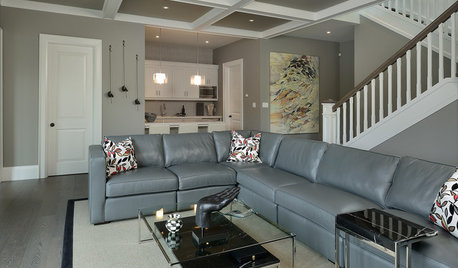
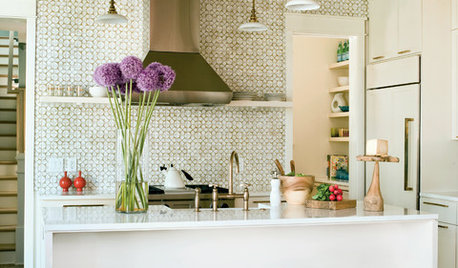
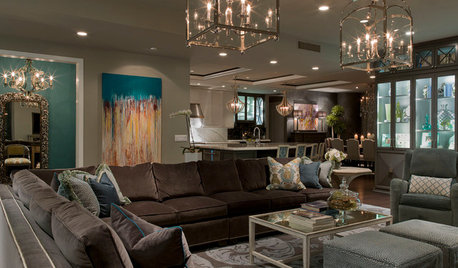
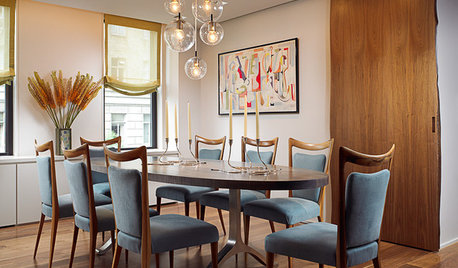
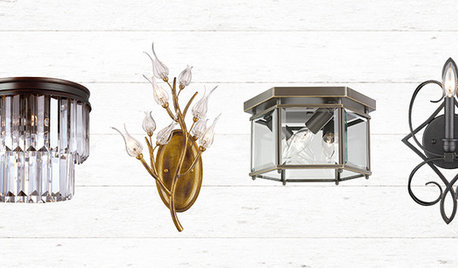
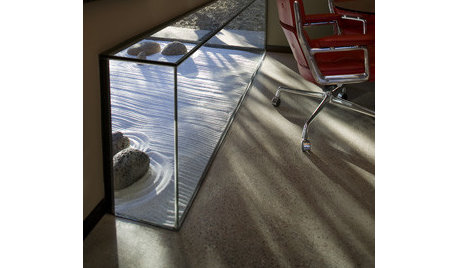
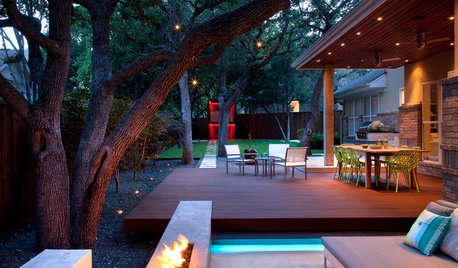
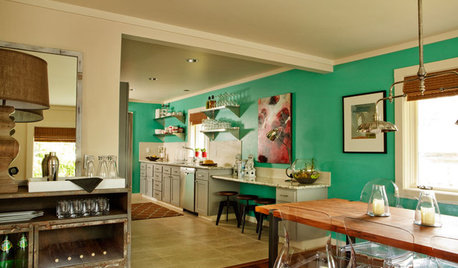
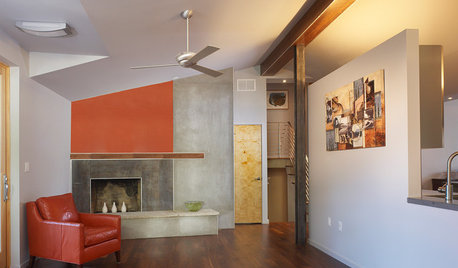
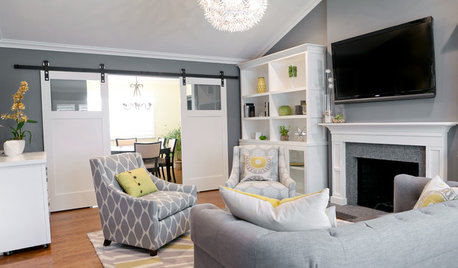



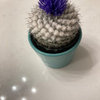
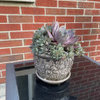
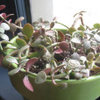

rooftopbklyn (zone 7a)